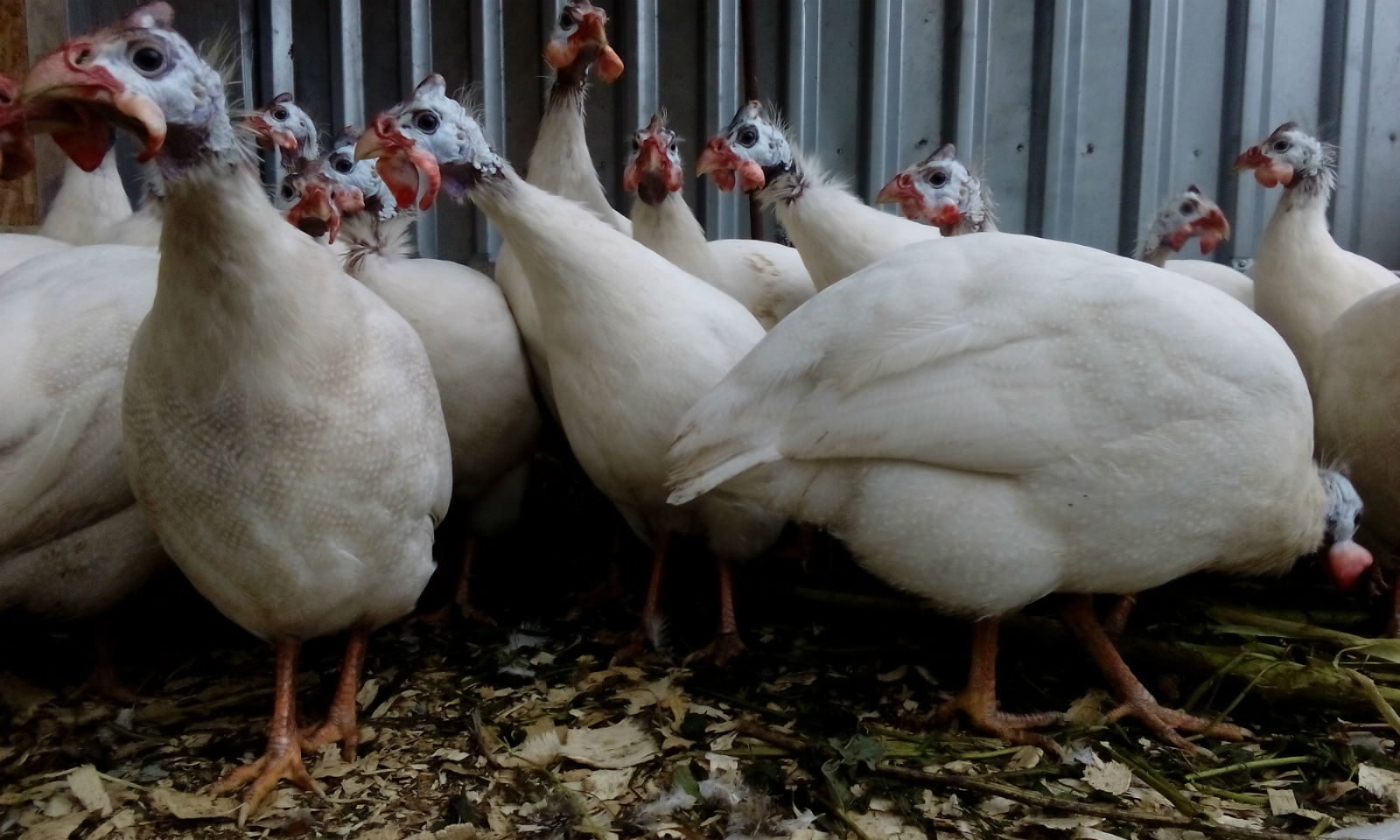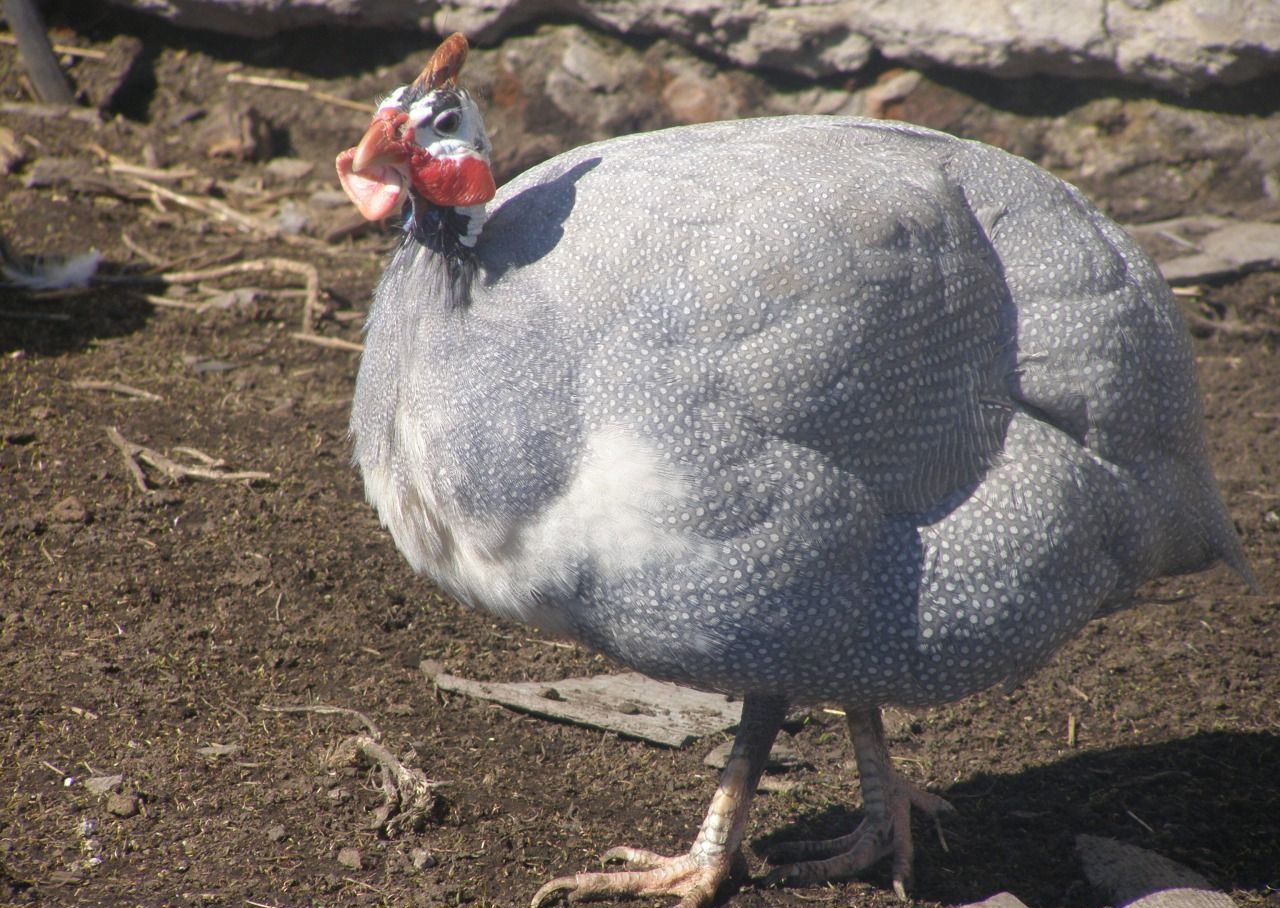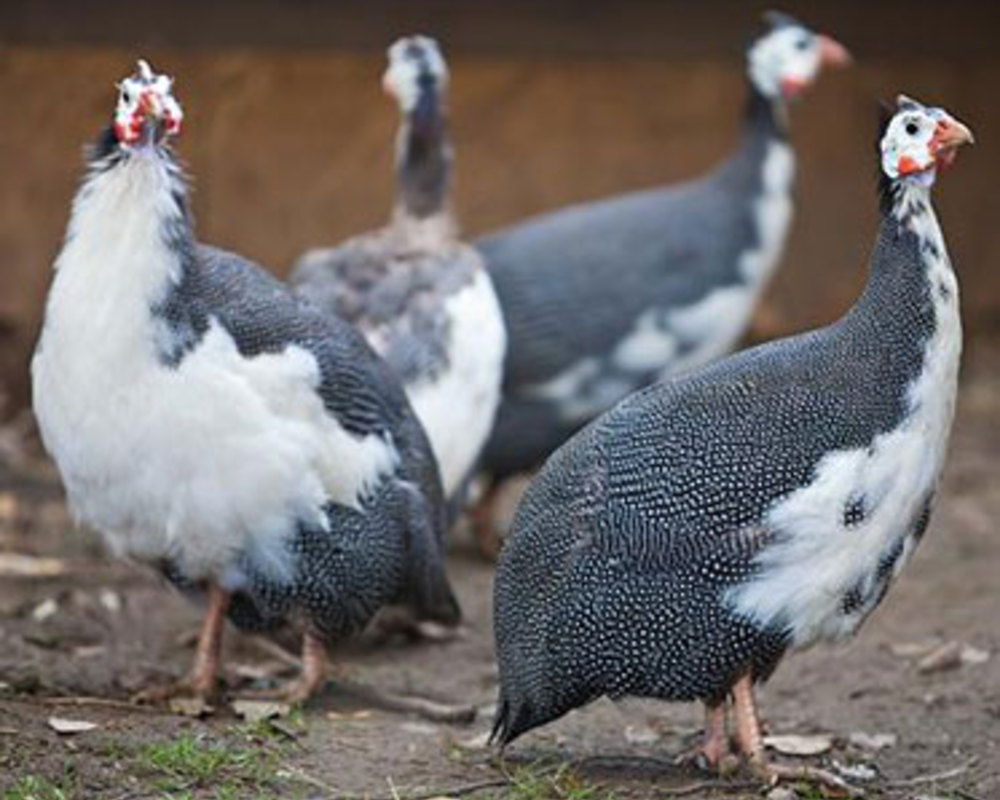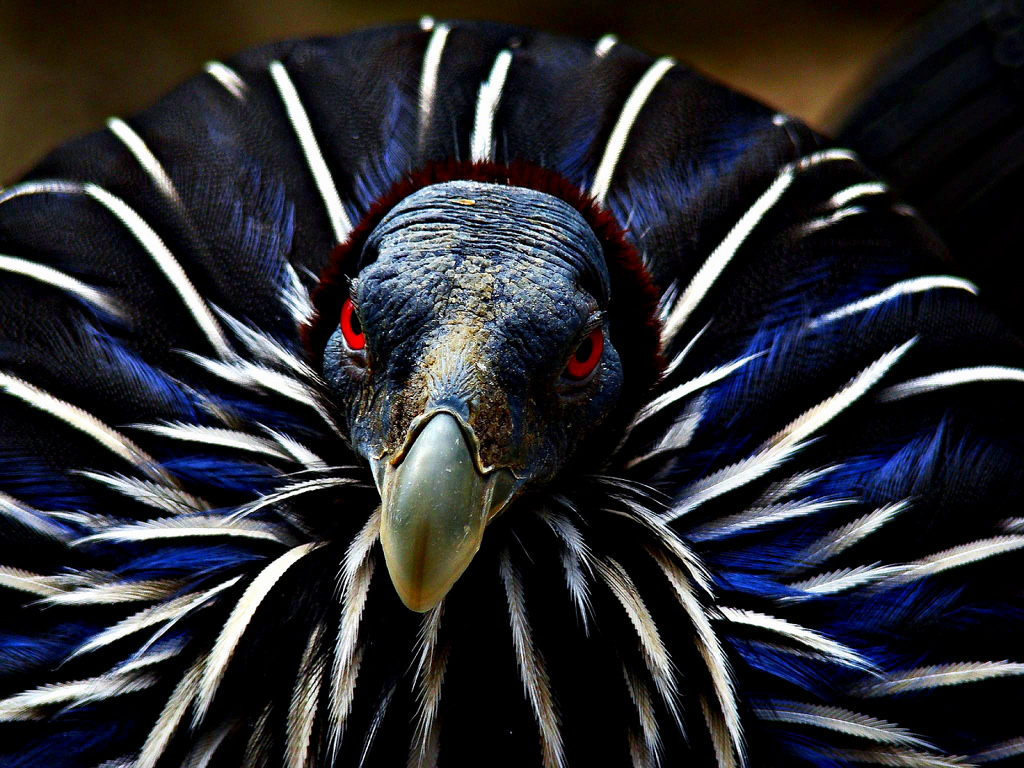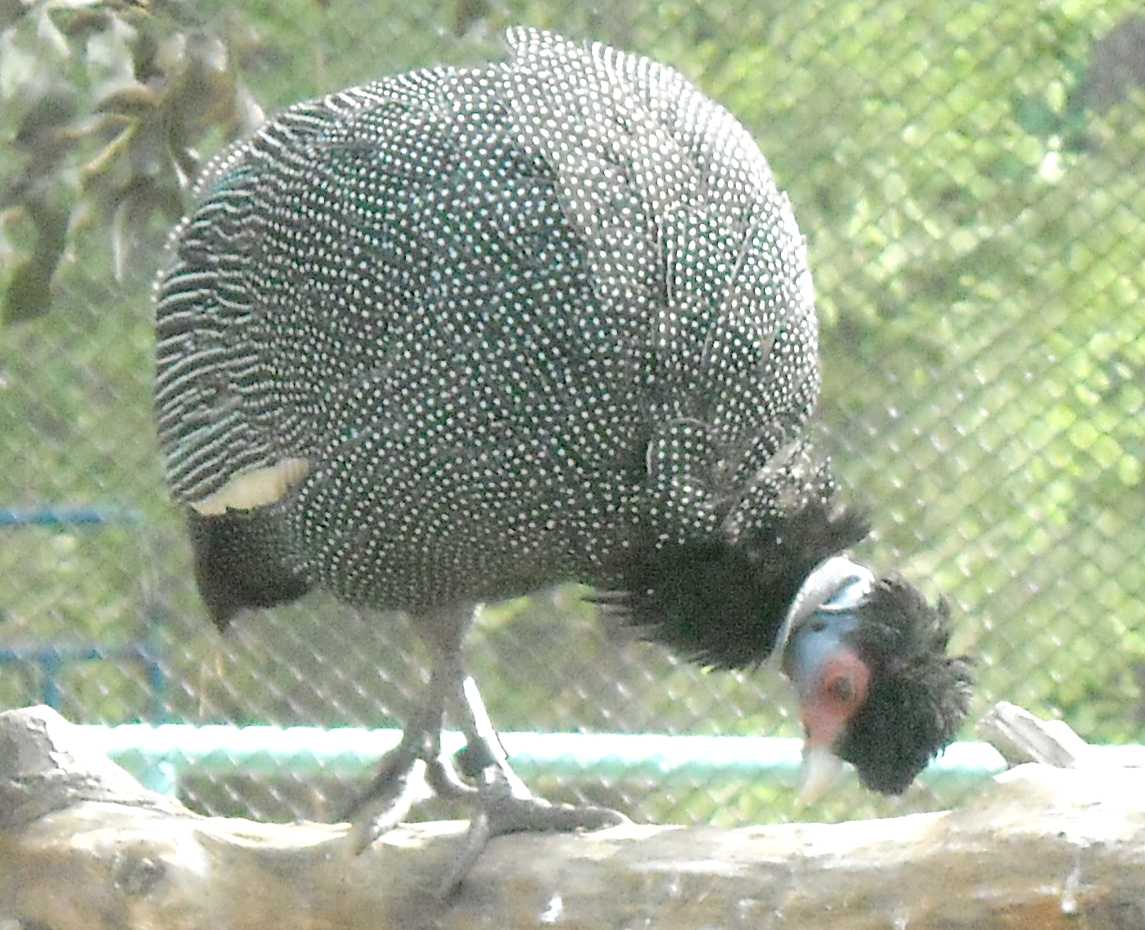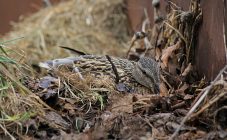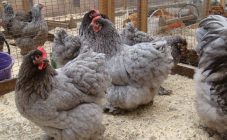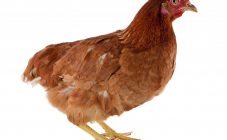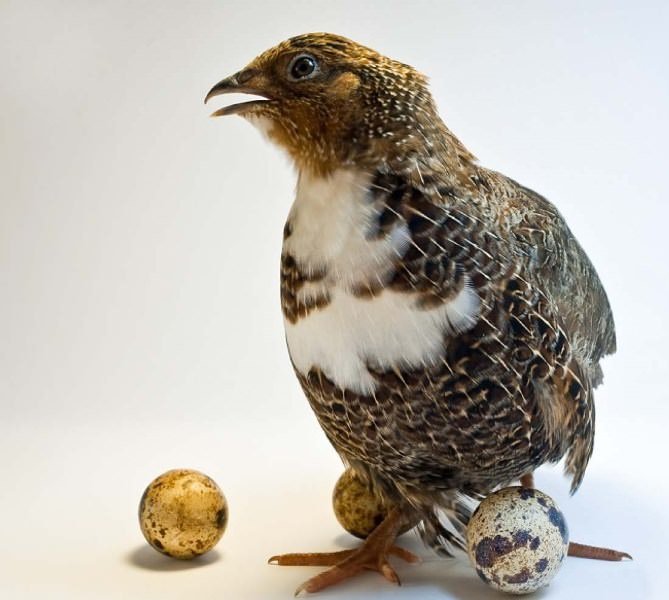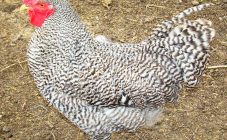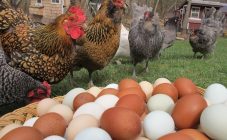Content:
Guinea fowl is a beautiful bird with variegated plumage, belongs to the order of the guinea fowl of the chickens family. In agriculture, it is in demand due to its high egg production and delicious dietary meat. Easy to grow at home.
Description of broiler guinea fowl
The bird has a rounded body of medium size, a long neck, mostly without feathers, and legs of medium length. The mass of an adult meat production at the age of 28 weeks reaches 3 kg. The head of a bright blue color is decorated with scarlet skin growths-earrings, a scallop or bunches of feathers of different shapes, depending on the species.
Due to such peculiar decorations, the bird is called royal. The color of the plumage is white, gray with white splashes, gray or blue. The wings are rounded with a large span.
Benefits of growing broiler guinea fowl
- the bird is unpretentious in nutrition;
- natural immunity to diseases and infections;
- easily adapts to low and high temperatures;
- tasty, dietary meat;
- nutritious, healthy eggs;
- attractive appearance.
Upon reaching six months of age, the bird begins to lay eggs. Egg production of birds of the egg direction is 120-160 eggs per year, their weight is 40-50 g. In terms of taste and nutritional qualities, they are on a par with quail eggs.
Varieties and description of the guinea fowl breed
- white Volga guinea fowl;
- blue;
- chubate;
- French;
- suede;
- white-breasted;
- Siberian;
- broiler Grimaud;
- fretboard.
Volzhskaya
Representative of a meat breed with an average egg production of 110-120 eggs per year. The plumage is white. Carcass weight reaches 2 kg. Suitable for growing in cold Siberian climates.
Blue guinea fowl
The type of egg direction, takes first place in the catalog for egg production, they carry up to 150 eggs per year. Birds with bright blue plumage will decorate any courtyard with their appearance.
Chubata guinea fowl
It got its name because of the tuft of curly feathers on the head. The plumage is black, there is a white speck. Carcass weight does not exceed 1.5 kg. Egg production is 120-150 eggs per year.
Guinea fowl broiler gray-speckled French
One of the largest meat subspecies. Carcass weight with sufficient fattening reaches 3 kg. The plumage is gray with white splashes. Adapts to temperature conditions. Egg production is average.
Suede
The plumage is cream. Carcass weight up to 2 kg. The breed was bred by random selection when breeding French. Poultry growth lasts longer than other breeds at 3 weeks, egg production of 90 eggs per year, less common than other subspecies. Adapted to warm regions.
Guinea fowl Zagorskaya white-breasted
The breed is egg direction. Egg production up to 150 large eggs. Carcass weight up to 2-3 kg. The peculiarity of this breed in the taste of meat is reminiscent of chicken. The plumage of the body is gray with white speckles, white on the chest.
Siberian
The Siberian white guinea fowl has a fast weight gain and egg production of 120-150 eggs per year. The plumage is white, on the head there is a horny growth. The birds are adapted to cold climates.
Grimaud - cross of French guinea fowl
Gains body weight twice as fast as a normal guinea fowl. At 28 weeks it reaches 3-3.5 kg. Strong resistance to disease and infection. Adaptation to temperature conditions from -40 to +40 degrees.
Vulture guinea fowl
The appearance is similar to the vulture. Small head and long neck without feathers. The color of the feathers on the body is bright: white, lilac, gray. Lays few eggs. The breed lives in wild places. Bred as a decorative bird in a rural courtyard.
Features of maintenance and care
Keeping adults does not require much hassle. But in order to bring the chicks to adulthood, certain rules must be followed. Young animals are kept in a dry warm room. It is important to exclude drafts. Even in a warm room, chicks will catch cold from drafts. Stocking density - 10 heads per 1 sq.m. The floor needs a bedding of straw or sawdust.
The place of keeping should be equipped with drinking bowls with clean water and full feeders with a grain mixture or mixed feed. It is forbidden to give moldy feed, this can lead to the death of the bird. Vitamins in the form of greens are required.
If the growing of livestock is not large-scale, the grown young growth is released into the garden. There they eat insects, snails and caterpillars - a source of protein.
Guinea fowls are collective birds and love to walk in the wild. But for the time of lodging and feeding they return home. Lawns and glades are suitable for walking.
In winter, guinea fowls do not need additional heating. It is enough that the bird is under a canopy and on a bedding to avoid frostbite of the paws.
Breeding broiler guinea fowls
Growing broilers is not particularly difficult even for novice poultry farmers. 5-6 females are left for one male. For mating, birds need will, they do not recognize the premises for such important matters.
In the future, the presence of a male is not necessary. The female lays fertilized eggs for 20 days. The productivity of the bird decreases by the third year of life, therefore, the operation of the bird is optimal for two years.
At the end of winter, guinea fowls begin laying in secluded places. The bird is very shy and will not rush in one place. Eggs should be collected and placed under laying hens or turkeys. If there are none, the eggs are placed in a special container with the sharp end down for preparation in the incubator. The incubation period lasts 29 days according to technology.
Growing guinea fowls does not require much effort. Farmers raise birds for dietary meat and eggs. Successful raising of livestock can give rise to a profitable business. Due to the lack of competition, guinea fowl meat and eggs can be easily sold on the market for a good price.
